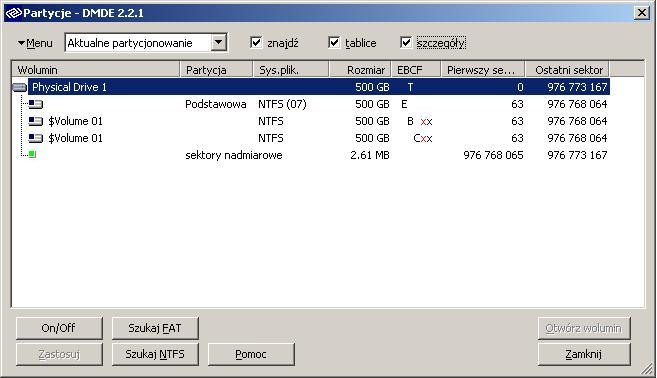

- #PARTITION READ ERROR TESTDISK INSTALL#
- #PARTITION READ ERROR TESTDISK PASSWORD#
- #PARTITION READ ERROR TESTDISK WINDOWS#
NOTE: For many points in the file recovery process, you can use quit ( q or ) to back up a step. Make sure you also restore the original owner and group since the file will be owned by root at this point. You should probably verify that the recovered file looks right before moving it back into its original location. The file in this case was left in /home/recovery/shs (starting directory with the selected directory appended). Once you see “ Copy done! 1 ok, 0 failed” in green, you’ll know the file has been restored. Keys: Arrow keys to select another directoryĭirectory /home/recovery <= recovery location Please select a destination where /shs/Up_on_the_Roof.pdf will be copied. NOTE: You will see helpful instructions at the bottom of the screen. Q to quit, : to select the current file, a to select all filesĬ to copy the selected files, c to copy the current file <=Īt this point, you’ll be ready to select where to restore that file within your starting directory (see earlier note about starting in a good place to check out the file before moving it back to its place of origin). In this case, the /home/recovery directory has no subdirectories, so this is our recovery spot. NOTE: You will see helpful instructions at the bottom of your screen: Use Left arrow to go back, Right to change directory, h to hide deleted files Once you’ve located the file that you need to restore, press “ c” to select it. If you have trouble finding the file, you can press / (like when you start a search in vi) to be prompted to enter the file name or some portion of it. near the top of the list to back up if you picked the wrong one. Press enter to move into that directory and then arrow down to a subdirectory as needed. Next, we arrow down to the specific home directory. Notice that it looks as if we’re starting in /, but this is actually the base of the file system that we’re working in. Then press the right arrow to select at the bottom and press enter. Partition Start End Size in sectors > 1 P Linux filesys. Analyse current partition structure and search for lost partitions In the next step, arrow down to “ Filesystem Utils”. > EFI GPT partition map (Mac i386, some x86_64.) Please select the partition table type, press Enter when done. Disk /dev/sdb - 500 GB / 465 GiB - SAMSUNG HE502HJ In this example, the deleted file was in a home directory in /dev/sdb.Īt this point, the partition type should already be selected by testdisk. Then tap the right arrow twice and press enter when Proceed is highlighted. Use the up and down arrow keys as needed to move to it. The next step is to select the disk partition in which the deleted file was stored (if not already highlighted).
#PARTITION READ ERROR TESTDISK PASSWORD#
You will then be prompted for your password (unless you very recently used sudo). In this example, we opted to create the log file. The > on the left and the reversal of the font and background colors that you will see show the option that will be used once you press enter. Here’s how: Use arrow keys to select, then press Enter key: At least initially, it’s a good idea to create the log file as it provides information that might prove useful. The first page of information presented by testdisk describes the tool and displays some options. Make sure you can write in the directory you select to start in. Once the files are successfully restored and verified, they can be moved back to where they belong and have their ownership restored as well. For this reason, I like to start in a directory like /home/recovery. When you recover deleted files with testdisk, you’re going to end up with the files being restored within the directory form which you started the tool and the files are going to belong to root. If you don’t have sudo access, you’ll get kicked out early in the process, and your logfile, if you chose to create one, will end up with a message like this in it: TestDisk exited normally. Recovering filesįirst of all, you have to be logged in as root or have sudo access to use testdisk.
#PARTITION READ ERROR TESTDISK WINDOWS#
Interestingly, it’s not just a Linux tool but is also available for MacOS, Solaris and Windows as well.ĭocumentation is available at.
#PARTITION READ ERROR TESTDISK INSTALL#
Install testdisk with commands like apt install testdisk or yum install testdisk.


 0 kommentar(er)
0 kommentar(er)
